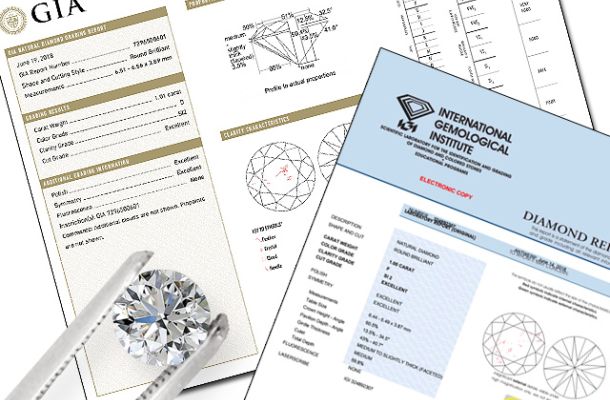
Pure gold can only be found in a laboratory, and silver without any additives is difficult to find: these two metals are too soft and malleable, and believe me, they would surprise you with their “anti-properties”. To increase its strength and resistance to wear and tear, the so-called white gold uses a ligature – a mixture of silver, platinum, palladium, zinc or a permissible amount of nickel. Otherwise, your “pure” silver ring would fall apart before your eyes the first time you wear it. Consider this: silver is so soft and malleable that 1 gram of it is the equivalent of 2 kilometers of wire!
Is appearances deceiving? At the first unscrupulous look, silver and white gold are very similar, but if you know these simple rules, it becomes clear which precious metal is in front of you, and the help of a professional jeweler may not be necessary. And though we recommend to apply to him, curiosity is not a vice and sometimes it is a protection against tricks of swindlers 😲 You will be helped by the physical properties of both metals, “home” methods of diagnosis and a couple of experiments…
By Eye
The visual differences are not too obvious, but if you look closely, you will notice a difference in the hues of the two metals. The silver piece will have more of a steel tone, while white gold will have a white tone. Here, however, you may be “hampered” by rhodium-plating – a thin layer of special “protection” applied on the jewelry pieces in order to improve their physical and decorative qualities: after such treatment, the color differences between the two metals are almost invisible. There is also a way out: examine the “insides” of the piece: the color of the untreated areas may bring you closer to the truth.

If the ornament is not additionally treated (for instance, if you buy a handmade item), you may ask to take it out of the cabinet with special lighting and try it on “unadorned”: white gold will always have a lacquer coating, while silver is more matt, with a characteristic steel (rather than white) metallic luster.
By marking
A point to start with is the presence of a special mark, or stigma, identifying the precious metal. If the jewelry is made of gold, you will see an unusual geometric figure in the form of a miniature square “flowing” into a rectangle with the image of a woman in a kokoshnik and the assay – the numbers indicating the number of mg of gold (pure) in 1 g of alloy. Variants of “gold” samples: 375, 585, 750.
If the piece is silver, it will be marked with an oval stamp that resembles an inverted barrel; next to the already familiar woman in a kokoshnik is engraved one of the following proofs: 830, 875, 925, 960.
By sound
If your jewelry has approximately the same weight and size, you can try playing “bouncy house”: toss them one after another so that they land on a hard surface and listen attentively. The sound of gold is louder, the sound of silver is muffled because of the different hardness of these precious metals.
By the Price
Examining the price is trivial, but true if you are going to buy jewelry in an unproven local jewelry salon or, even worse, literally “out of hand.” White gold cannot cost a penny, no matter how tempting the seller’s offer may seem to you, even at the most super-mega-special sale! Silver is always more affordable and democratic, so if you are offered a ring “honest-to-goodness white gold” for the price of the cheapest silver, this is a serious reason to think twice.
If You Are Willing to Risk It
Suppose you decided by all means to determine the origin of jewelry, which was lying around your house “idle” for several years or inherited. The following methods are more radical, and the jewelry salon will not hold them, but if you have an experimental spirit, they also have the right to life.
At home, it is not difficult to make a test, but it is risky. First method: a comparison by the parameter of resistance to deformation. Silver is softer, and deliberate mechanical action will not pass it without a trace: a fine scratch may be left on the surface of the piece. Gold is much less bendable and is rarely deformed under the mild impact of external force.
The second method is to apply a drop of bleach to a small area on the inside of the jewelry piece. You can use an ordinary bleach, in the absence of iodine. Gold jewelry will come out “dry from water” and will not stain; silver jewelry will stain at once.





